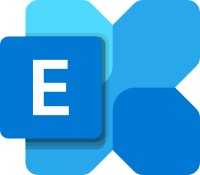 [German]Note to Exchange Online administrators. Microsoft has just announced in a blog post that it will discontinue Exchange Web Services (EWS) on October 1, 2026. All communication will then have to be done via Microsoft Graph from that date. So there's still two years to make this transition in the enterprise.
[German]Note to Exchange Online administrators. Microsoft has just announced in a blog post that it will discontinue Exchange Web Services (EWS) on October 1, 2026. All communication will then have to be done via Microsoft Graph from that date. So there's still two years to make this transition in the enterprise.
The announcement was made on September 19, 2023 in the Techcommunity post Retirement of Exchange Web Services in Exchange Online. I came across this via the following tweet from the team.

This should not come as a complete surprise to Insiders, as Microsoft had already announced in 2018 that there would be no more feature updates for Exchange Web Services (EWS) in Exchange Online. At that time, Microsoft had recommended developers to switch to Microsoft Graph. And in October 2021, there was an information that several little-used EWS API features had been deemed "deprecated."
Gradual shutdown
From October 1, 2026, things will get serious. Microsoft plans to begin blocking EWS requests from non-Microsoft applications to Exchange Online. While the EWS components of the service will continue to receive security updates and certain non-security updates, product design and features will remain unchanged. This change also applies to the EWS SDKs for Java and .NET, Microsoft writes.
Despite the announcement, EWS will still be available and will still be supported for use in production environments. However, Microsoft strongly recommends migrating to Microsoft Graph to access Exchange Online data and gain access to the latest features and functionality.
The current announcement and EWS retirement apply only to Microsoft 365 and Exchange Online (all environments); there are no changes to EWS in Exchange Server. Additionally, the changes in Exchange Online do not impact Outlook for Windows or Mac, Teams, or other Microsoft products.
Migrating applications to Microsoft Graph
Developers need to port applications that use EWS to Microsoft Graph. However, Microsoft writes that there are several functionality gaps between EWS and Microsoft Graph. Redmond lists the following examples:
- Access to archive mailboxes: Microsoft is working on providing access to archive mailboxes via Microsoft Graph.
- Folder-related information / user configuration: Microsoft developers are also working on these features.
- Exchange Online Management: Currently Microsoft is investigating solutions for this for online management.
- Access to public folders: Microsoft the need to allow third-party applications to access Exchange Online public folders via the Graph API.
On the latter point of public folder access, Microsoft is interested in feedback from customers and partners who develop solutions other than backup and recovery solutions that use public folders. For feedback, Microsoft provides an email address in the Techcommunity article. Microsoft plans to provide an updated schedule for implementing the missing features in Microsoft Graph in the coming months.
If you are concerned about this topic, you can find more information about switching to Microsoft Graph in the Techcommunity article. I found the comments below the Techcommunity article interesting. MVP Vasil Michev gets to the core of the matter and writes that since the announcement in 2018 that EWS would not be developed further and that people should switch to Graph, the community had repeatedly pointed out the lack of functionality. Nothing has happened in this area for five years, he says. The comment gets a lot of agreement – looks like this is yet another "abandoned Microsoft construction site where activity rests" popped up.
The response then came from Microsoft that they have spent some time analyzing the EWS telemetry and meeting with third party developers to not only identify gaps and understand the business cases behind the community/ISV feedback, but also to prioritize closing those gaps and plan their implementation with the development teams. They are working on many issues, but it is too early to provide details, he said.
One more point is the following statement from Microsoft: "We previously announced that we plan to prevent new apps from registering in Azure with EWS permissions, but based on your feedback, we've decided to postpone that plan for now." There's a lot in clarification or limbo right now. And what was also going through my mind: Somewhere I had remembered that there is a charge for using the Microsoft Graph API in certain areas (see Upcoming billing changes for Microsoft Graph APIs for Teams messages).



